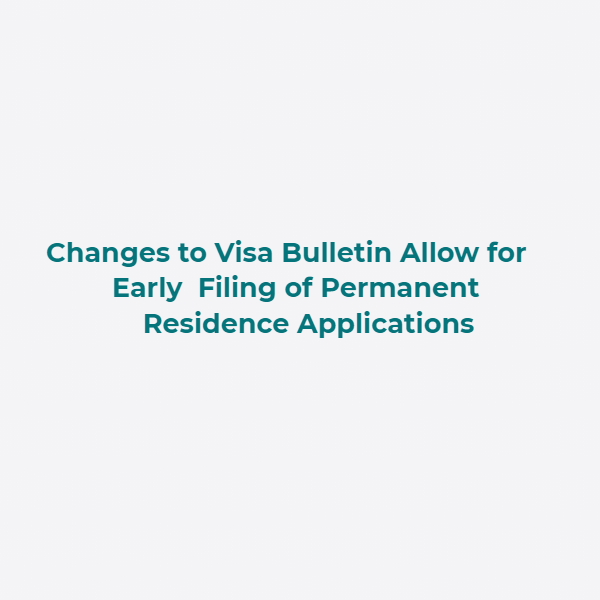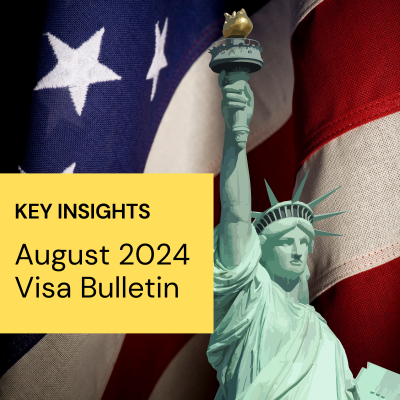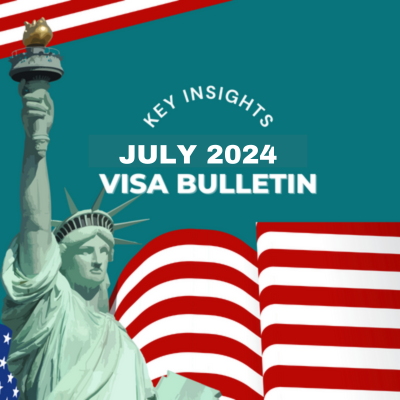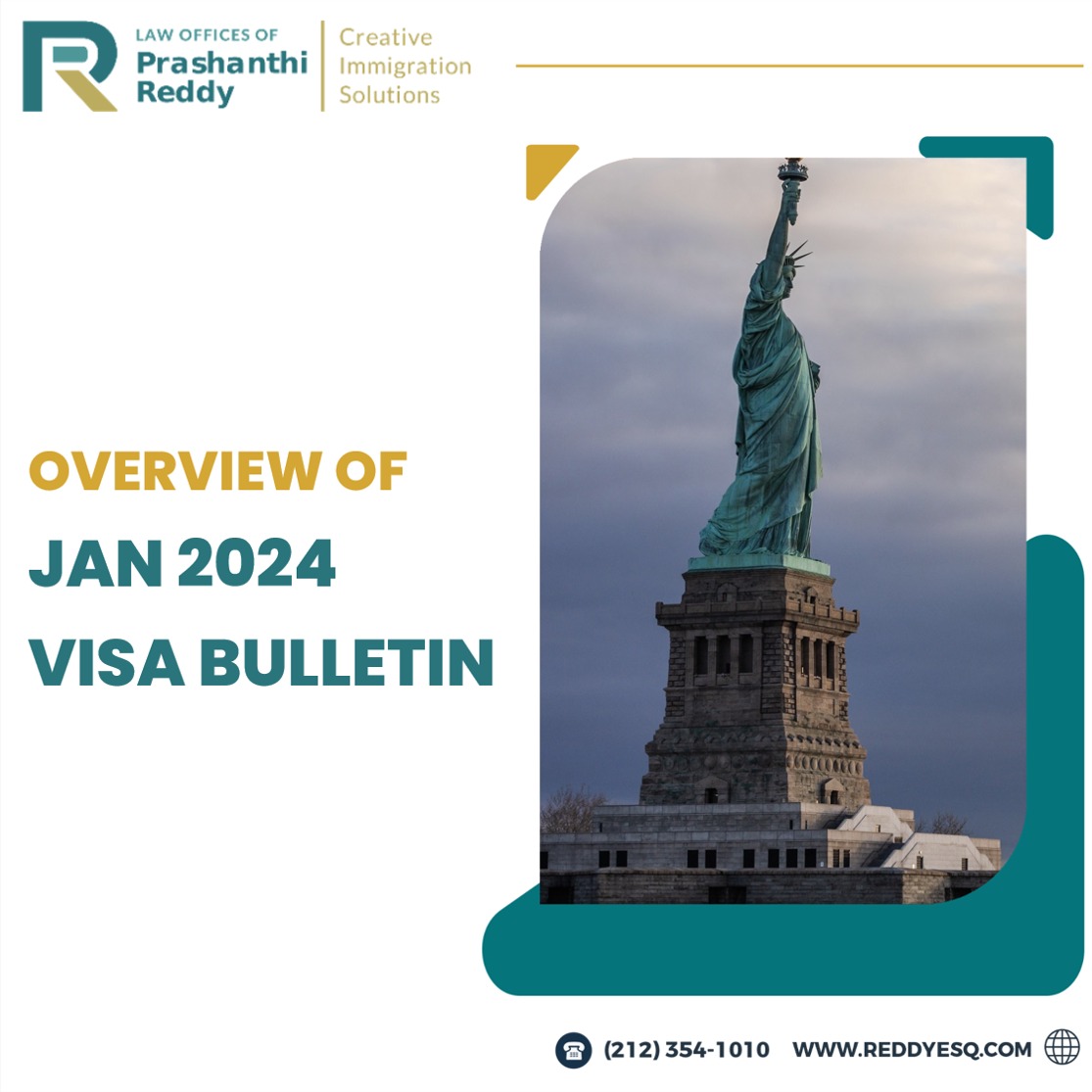On September 9, 2015, the Department of State and USCIS jointly announced new procedures of visa bulletin that will allow individuals who are stuck in the family-based and employment-based immigrant visa backlogs to start their immigrant visa paperwork or apply for adjustment of status before their priority date becomes current and an immigrant visa becomes immediately available.
The current system for determining immigrant visa availability is based on a monthly Visa Bulletin published by the State Department that contains a series of cut-off dates (which often fluctuate from month to month) that are based upon the relevant foreign national’s country/region of chargeability and Employment-Based (EB) preference category. In order for a foreign national to file Form I-485 (Application to Register Permanent Residence or Adjust Status) and have this application approved, the applicant’s priority date must be “current,” meaning that the priority date must be before the relevant cut-off date listed in the Visa Bulletin applicable to the foreign national’s country/region of chargeability and EB preference category.
The State Department has created two separate categories of cut-off dates, both of which would be reflected in each monthly Visa Bulletin. The first, an “approval” cut-off date, would function as the current cut-off date does and would regulate when an adjustment application or immigrant visa application may be approved. The second, an “acceptance” cut-off date, would regulate when an adjustment of status application may be filed and would allow the filing of such an application, provided that the foreign national’s priority date is before the relevant acceptance cut-off date. Once the adjustment application is filed, the foreign national would be eligible for the secondary benefits available to adjustment of status applicants, including employment authorization documents, advance parole authorizations, and I-140 immigrant petition portability.
Beginning with the October Visa Bulletin, there are now two charts listing dates for each preference category and country of chargeability: (1) An “Application Final Action Dates” chart (“Final Action Date”); and (2) a “Dates for Filing Applications” chart (“Filing Date”). USCIS has also issued a fact sheet describing the new procedures. These changes will impact immigrant visa applicants and adjustment of status applicants as follows:
- Immigrant Visa Applicants (Consular Processing): Individuals with priority dates earlier than the date listed on the “Filing Date” chart for their preference category and country of chargeability will be notified by the National Visa Center that they may assemble and submit their documentation and begin the immigrant visa application process. However, a final decision on the immigrant visa application cannot take place until the priority date is current (i.e., is earlier than the “Final Action Date”).
- Adjustment of Status Applicants: Individuals who are in the United States and are eligible for adjustment of status must use the “Final Action Date” chart to determine when they may submit their applications for adjustment of status, unless the Visa Bulletin indicates that they may instead use the “Filing Date” chart. The early “Filing Date” chart may only be used by adjustment applicants if USCIS determines there are sufficient immigrant visas available to support the filing of additional adjustment applications beyond that which would be received under the “Final Action Date” chart.The October 2015 Visa Bulletin permits both family- and employment-based immigrants to use the “Filing Date” chart to file adjustment of status applications with USCIS for the month of October. Thus, individuals who have a priority date earlier than the “Filing Date” cut-off for the month of October may submit an adjustment of status application in October. These individuals will also be able to obtain employment authorization and advance parole as an adjustment applicant. However, please note that there is no guarantee that adjustment applicants will be able to benefit from the earlier “Filing Date” chart in any given month moving forward.This chart, which compares the “Final Action Dates” to the “Filing Dates” as reported in the October Visa Bulletin, provides some insight into the categories that are most impacted in October. Of particular note:
- The “Filing Date” for most of the family-based categories is less than 1 year and up to around 2 years earlier than the “Final Action Date,” with the exception of F-1 Philippines with a difference of 4+ years, and F-3 Mexico with a difference of 2+ years.
- The employment-based categories most impacted by the October Visa Bulletin are:
- EB-2 India: Final Action Date = 5/1/05; Filing Date = 7/1/11
- EB-3 Philippines: Final Action Date = 1/1/07; Filing Date = 1/1/15
- EB-2 China: Final Action Date = 1/1/12; Filing Date = 5/1/14
- EB-3 China: Final Action Date = 10/15/11; Filing Date = 10/1/13
With this change is likely that the “acceptance” cut-off dates will be several years before the “approval” cut-off dates in the China/India EB categories, with the result being that a large number of nationals from these countries will be able to file adjustment applications immediately once the Visa Bulletin containing the new acceptance cut-off dates becomes effective.
This is obviously a major development in the employment-based green card process and will be particularly welcome to nationals of India and China, some of whom currently face delays of years before they can file adjustment of status applications.
The real benefit here is to technology companies who hire F-1s. When you combine the prospect of premium processing on PERM filings with ‘early filings’ on I-485s, you can go from F-1 OPT (including STEM OPT) and skip the H-1B cap. They can possibly go from F-1 OPT to PERM/I-140/AOS EADAP. However, there might be some issues of “Intent to Immigrate” while filing a new F-1 or travelling on F-1, after the I-140 is approved.
We can expect to see more activity and dates moving forward during the end of the Fiscal year in October and then dates again retrogressing the rest of the year.






